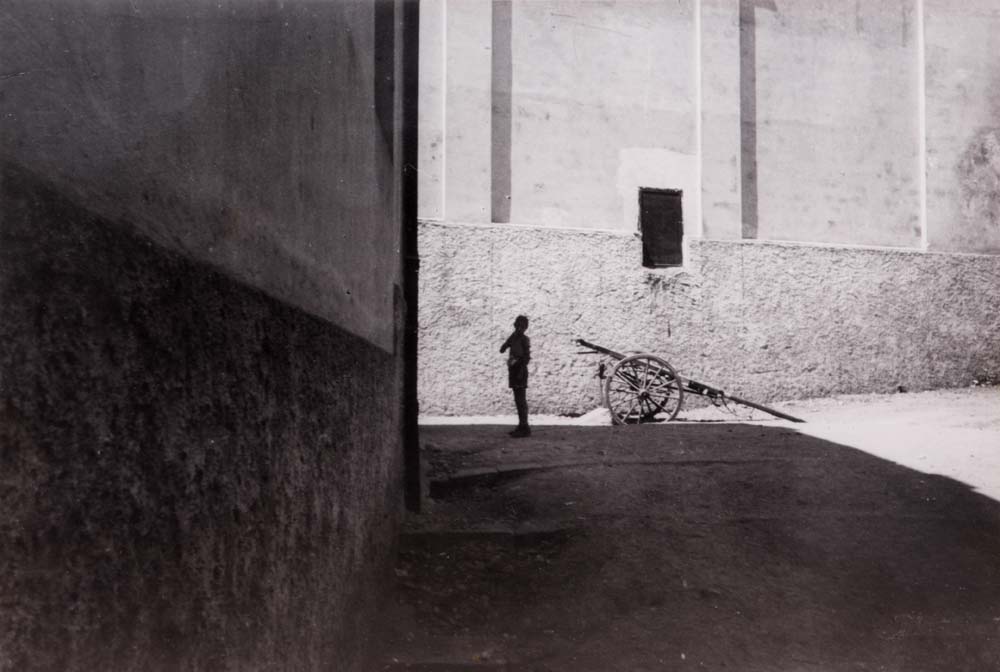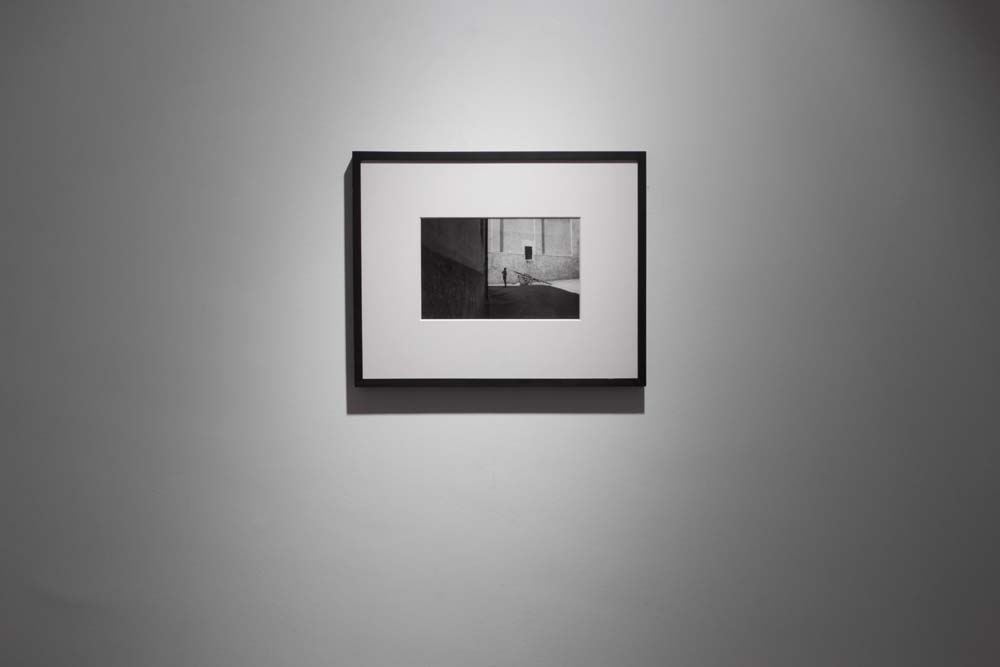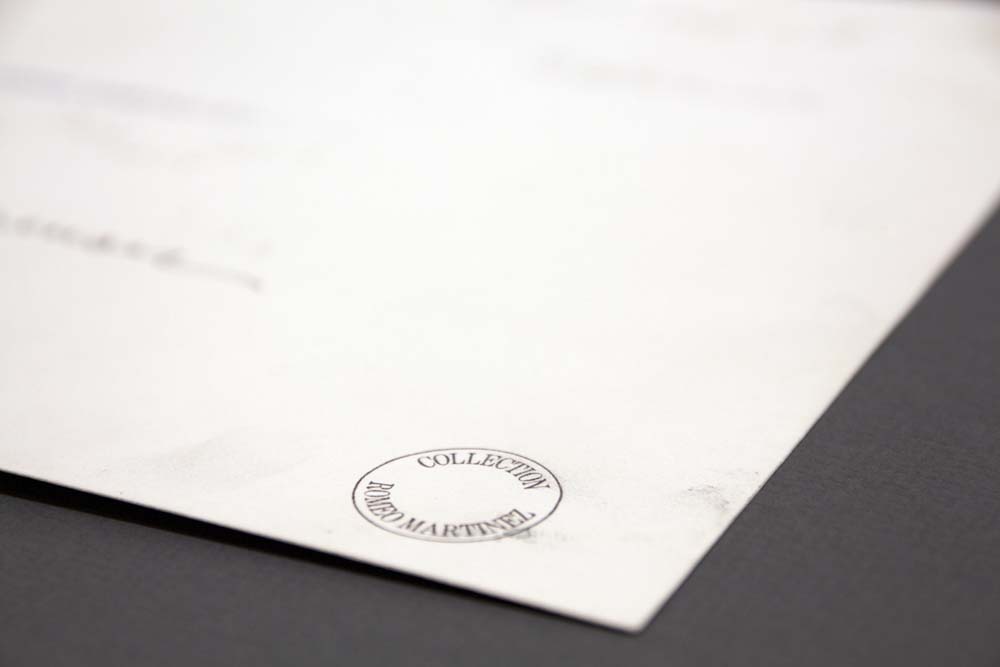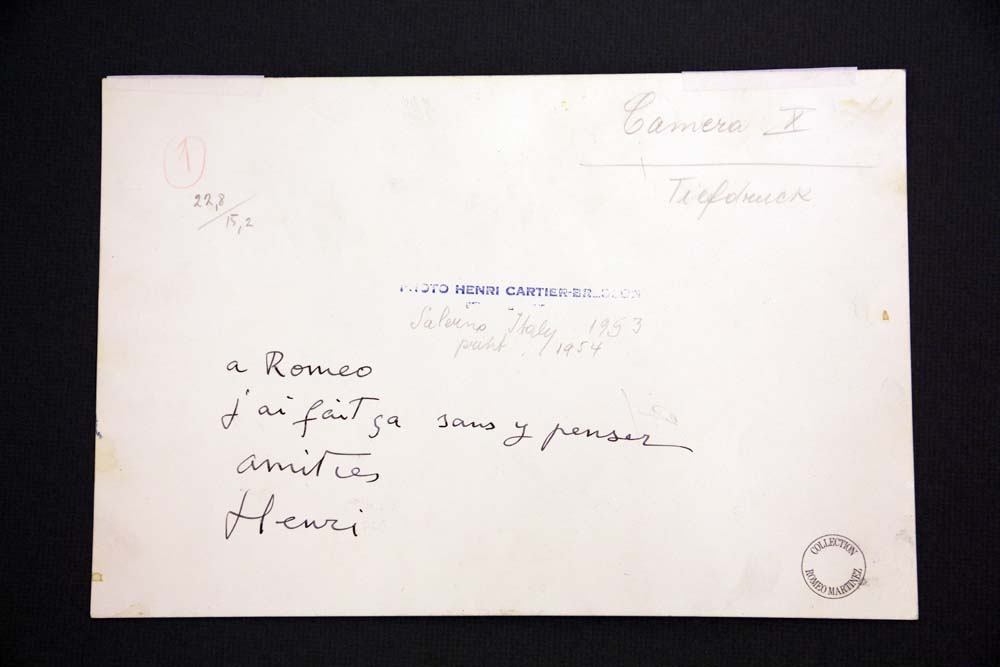Salerno, Italy, 1933
HENRI CARTIER-BRESSON
Signed, dated, inscribed with 'Salerno Italy 1953', 'A Romeo, j'ai fait ça sans y penser, amites, Henri' and print date and stamped with photographer's and collector's ink stamps on reverse
Silver gelatin print, printed 1954
7 4/5 x 11 4/5 inches
Provenance: the collection of Romeo Martinez

Henri Cartier-Bresson is perhaps the most significant photographer of the twentieth century. Striving for a perfect balance of content and formal composition in all his work, Cartier-Bresson brought a new aesthetic and practice to photography, initiated modern photojournalism, and influenced countless followers.
This photograph was taken in Salerno, Italy at the beginning of Cartier-Bresson’s travels across southern Europe, and is one of the first images he made after purchasing a Leica camera in Marseilles in 1932. Cartier-Bresson’s adoption of the handheld camera had an enormous impact on his photographic output and introduced a spontaneity to his work, enabling the capturing of each fleeting moment that he encountered.
It also marked an early turning point in his career in the adoption of a style that would come to define twentieth-century photojournalism.
Cartier-Bresson’s mantra focussed on the dynamic and harmonious aligning of photographic composition as the foundation of a successful picture, which he came to define as ‘the decisive moment’. At the time the present photograph was taken, this idea was in its genesis, with Cartier-Bresson emphasising the formal qualities of his compositions. Influenced by the dominant aesthetic of Modernism at the time, this photograph sees Cartier-Bresson balance a simplified, geometric composition of light and shadow and horizontal and vertical lines, which are only disrupted by the lone figure and disused street wagon.
Cartier-Bresson’s adoption of the handheld camera had an enormous impact on his photographic output and introduced a spontaneity to his work.
By the 1930s, technical advancement in the development of photographic film allowed for the editing of negatives, which was common practice amongst photographers. Nonetheless, Cartier-Bresson insisted that photography’s potency lay in the particular moment in which an image is taken. As such, Cartier-Bresson’s prints now come to us largely without retouching, darkroom manipulation, or cropping: evidence of the decisive precision of the artist’s camera work.
The present print comes from the collection of Romeo Martinez, an art historian who was the editor-in-chief of the influential magazine, Camera, from 1953-1964. Martinez was a friend of Cartier-Bresson and this print, made in 1954, has a dedication to him on the reverse





